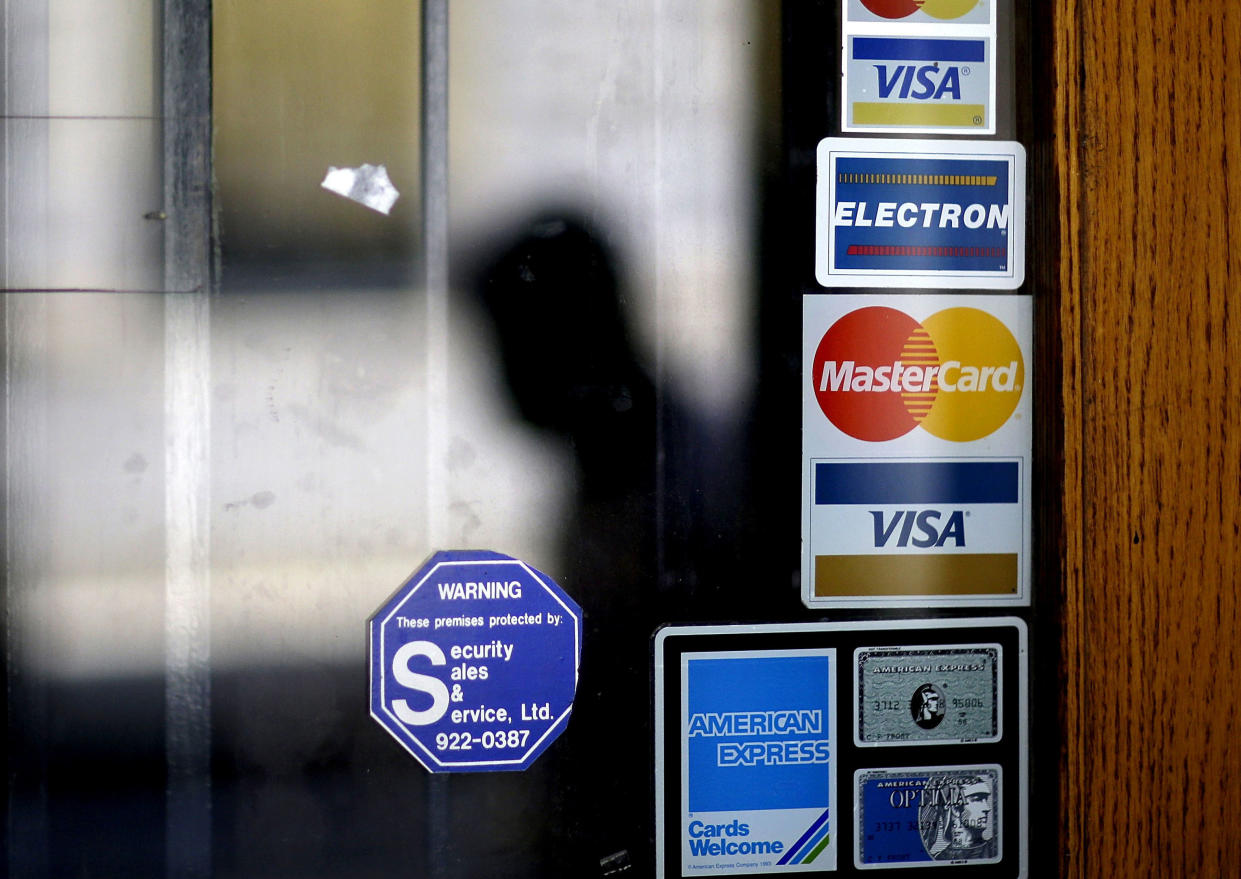Personal loans are masking Americans’ credit card problems
Folks who turned to personal loans to manage outstanding balances on credit cards are finding themselves back in card debt months later.
A survey conducted by TransUnion between April 2021 and September 2022 found that borrowers who used a personal loan to consolidate their credit card debt saw their balances decrease by 57% on average, but for many, those balances returned close to their previous levels 18 months later.
Researchers from LendingTree found similar results, with borrowers again starting to pile on credit debt only three months after consolidation.
The data underscores what seems like a growing debt problem for many Americans, as total balances hit all-time highs, interest rates remain north of 20%, and delinquencies start to tick up.
"Though it may be tempting to see that available credit limit, it’s really important to keep that balance low in order to not get yourself further into debt," Liz Pagel, senior vice president and consumer lending business leader at TransUnion, told Yahoo Finance.
Read more: Personal loan vs. credit cards: What to use for an emergency?

Americans are relying more on credit cards
Borrowers turn to unsecured personal loans to consolidate their debt because interest rates on those loans are much lower than on credit cards. The average rate on a personal loan is under 10% if you have good credit, says Pagel. Credit card rates have soared above 20%, tracking the rate hikes from the Federal Reserve to combat inflation.
Read more: What the latest Fed rate hike plan means for bank accounts, CDs, loans, and credit cards
But the pay-down strategy only works if borrowers change their credit card ways after consolidating. And that’s not happening.
TransUnion found borrowers reduced how much of their credit limits they used from 59% to an average 14% after consolidating. But just 18 months later, those same borrowers were using 42% of their available credit – regardless of their risk tier.
According to LendingTree, the average balance for those who paid off between $1,000 and $4,999 in credit card debt with a personal loan saw their average balance dip from $9,541 to $7,004 two months later. But it bounced back up to $8,476 by the fifth month after consolidation.
Matt Schulz, LendingTree chief credit analyst, says that inflation, and lack of pandemic-induced stimulus cash have pushed borrowers to rely more on credit cards recently.
With interest rates marching higher, those debts can become hard to wrangle in.
"Many Americans lean on cards as a de facto emergency fund during rough financial times," Schulz said in a statement. "Credit card interest rates are at an all-time high, and the most troubling thing is that they’re going to keep climbing for a while. Consumers should plan accordingly."
More borrowers deep in debt
The shifting of balances may continue as credit card debt rises.
For instance, total unsecured loan balances grew to $232 billion in the second quarter, the highest level on record, according to TransUnion, representing year-over-year growth of 21.1%.
That follows growth in credit card balances, which hit $1.03 trillion, up 4.6% from the previous quarter, the Federal Reserve of New York revealed earlier this month. Similarly, the Federal Reserve Bank of St. Louis reported outstanding credit balances had surpassed $1 trillion this month. Both indicators were record highs.
And more indications are coming that Americans are having a tough time paying down those debts.
Just over half of credit card borrowers (51%) couldn’t pay off their entire balance each month and let the debt roll over from one month to the next, accruing interest, a separate survey by JD Power found. That was the first time that the share of Americans revolving their debt was higher than the portion who paid their bill in full.
And Macy’s (M) said this week its second quarter credit card sales slid by 36%. On average, consumers unable to pay off their bills were facing nearly 32% annual percentage interest rates on their Macy’s cards and the retailer had to write off many of those ballooning balances.
A separate study showed that the youngest adults were already worse off, slipping into delinquency at higher rates compared to other age groups. The problem, experts said, could worsen once federal student loan repayments resume.
That’s why it’s best to prepare now.
According to Schulz, the best way to start is by calling your credit card lender and asking if you can get a lower interest rate or if you could transfer your funds to a zero percent balance transfer card.
"Though they’re likely not as easy to get as they were a few months ago, zero-percent balance transfer credit cards are still the best weapon for your battle against credit card debt," Schulz said. "They’re still widely available for those with good credit, like 700 or higher, and can allow you to go up to 21 months without accruing any interest. That’s a really big deal."
Gabriella is a personal finance reporter at Yahoo Finance. Follow her on Twitter @__gabriellacruz.
Read the latest financial and business news from Yahoo Finance
